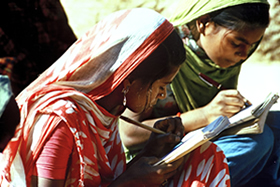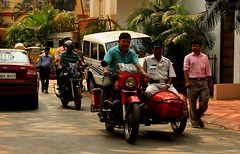 I suppose it needs to be said that the literacy figures for India are simply abysmal. For women in particular it is about 60%.
I suppose it needs to be said that the literacy figures for India are simply abysmal. For women in particular it is about 60%.
But the really bad news is that that isn’t a real estimate of how many can actually read and write in India. When there was a lot of angst expressed over how India houses almost half the world’s illiterates, the government got down to work on it — of course Indian style.
They created a new official definition for ‘literacy.’ By this unique Indian method, anyone who can read and write their name is officially counted as literate!! So Sita who can write S I T A, but doesn’t know the alphabets, can’t read and write anything else, considers herself literate.
Not only that, these women even when they work and earn, have no idea of how much they are actually earning or should be earning. They have no concept of savings, or calculation of change when they go shopping and take whatever change is handed over to them. So among the 60% women literates, 84% (see below) have little or no idea of how to handle daily cash transactions!
There was a Sita who had worked as a part-time domestic help for for me for a year. She was proud to call herself “literate” and insisted on signing the pay register instead of putting her thumb print as is customary for “illiterates” in India. They are called the “angootha chchaps” (thumb printers) — an offensive term. Naturally no one wants to own it. I had about 12 ‘signatures’ from Sita, all wildly varying in shapes and proportions. She turned down repeated requests from me to allow me to teach her. She said what she ‘knew’ sufficed her. Of course I or someone was always there to fill her forms, help her with her banking etc. But she was happy and proud to say she could write. As I suppose is India!














